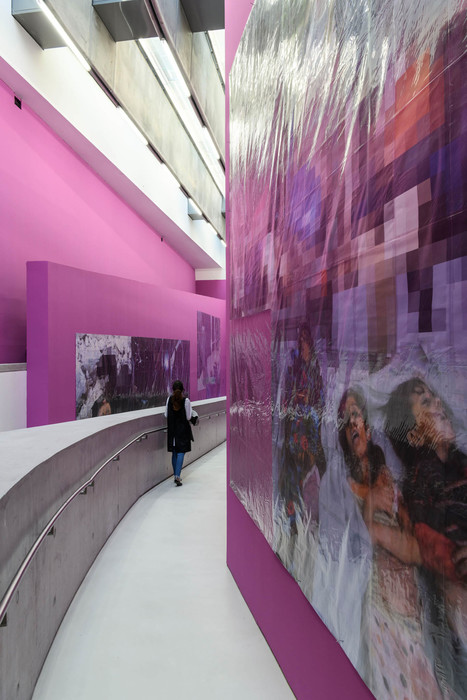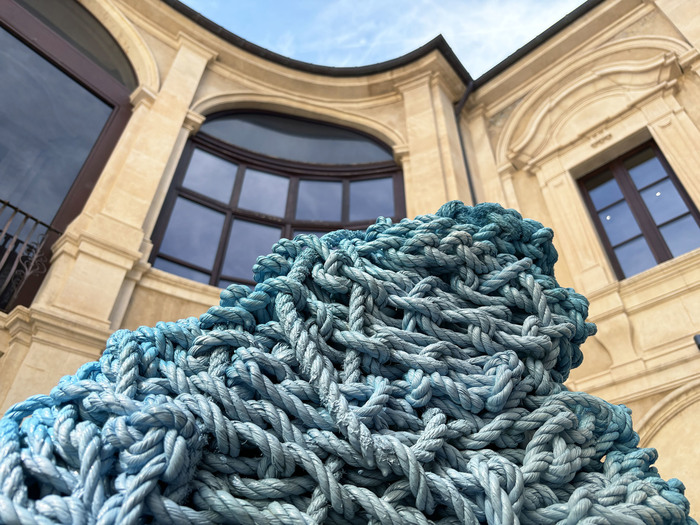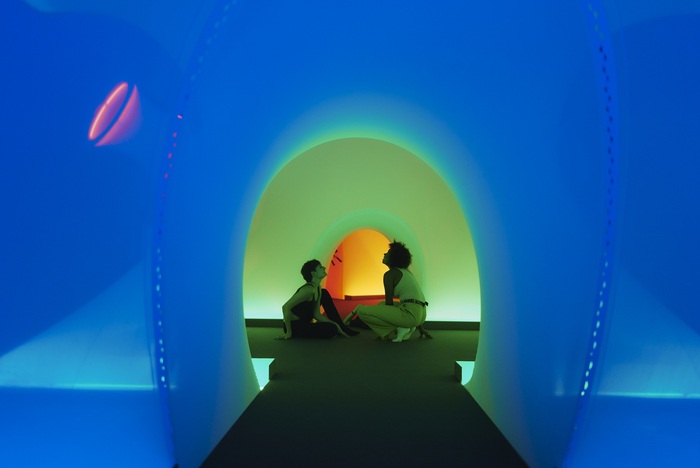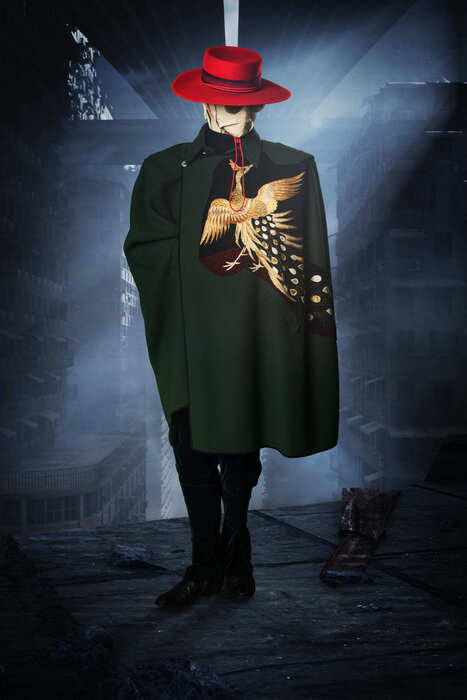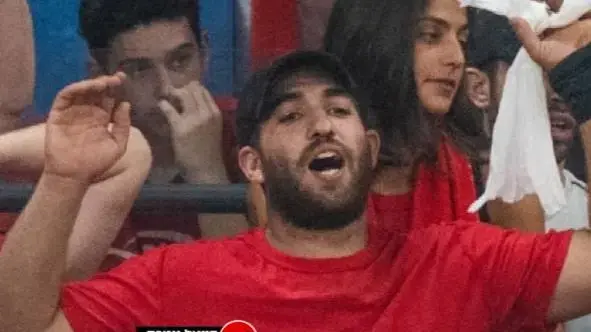ROME - "Yes, I am a committed artist. Committed to respecting my works and work. But I think this applies to any artist and also to museums, which are committed to their mission to show art". Thus Thomas Hirschhorn, one of the best known in the world, presents The Purple Line, the long purple wall six meters high and over 250 long, designed to present Pixel-Collage, a monumental series of 121 works created between 2015 and 2017. From 20 October and until March 6, 118 of them are exhibited for the first time together at Maxxi (n.86 will remain in the collection), arriving from 21 prestigious international private realities, institutions and galleries, in a large solo exhibition curated by Hou Hanru and Luigia Lonardelli, who literally imposes herself and crosses Gallery 3 of the museum designed by Zaha Hadid,cutting the spaces between corners and abrupt changes of direction.
"I've always loved making collages. I love putting together things that shouldn't be together", explains the Swiss artist, who combines strong images of mutilated bodies in war zones or violent snapshots of massacres and conflicts collected on the web with photographs at Maxxi. fashion advertisements from glossy magazines. Contrary to what normally happens on the media, the latter, created precisely to capture attention, are pixelated, while the former are visible in all their horror, without filters or censorship, often even in large formats. The result, "has an overwhelming impact - says the president of the Maxxi Foundation, Giovanna Melandri - A challenge to the limit of this institution and this space. On the other hand, looking at reality in a different way is also a different way to experience it.With these works we understand that we must reopen our eyes, our conscience, our awareness. Hirschhorn makes us see outside what we are also inside. "The pixel becomes in fact the tool that connects and creates bonds between things, between beauty and cruelty, shortens the distance between two apparently opposite and yet contemporary realities of the world in which we live. an era full of contradictions, he says, "chaotic, complex, cruel, immeasurable, beautiful".an era full of contradictions, he says, "chaotic, complex, cruel, immeasurable, beautiful".an era full of contradictions, he says, "chaotic, complex, cruel, immeasurable, beautiful".
"We started working on the exhibition before the pandemic - says Lonardelli - It was an almost prophetic work, between 2015 and 2017, which has taken on more and more clarity. Each has its own Purple Line, which is the limit that we can see. The exhibition is about what really gets to our eye. " An invitation, adds Hanru "to change the way we look at works and the world". The intent is anything but aesthetic. "My collages are a commitment to the universality of the world - says Hirschhorn, who has been in Rome for three days - I am against particularism, against information, against communication, against facts and against opinions. pixels, or even breaking it down into smaller pixels, is a decision. A political decision. " In this exhibition, he adds,"the contact between us, the works and our eyes is left direct. Nobody tells us what I can see and what not. In recent times we have been able to see an increasing number of pixelated images. I don't care so much about the appearance of censorship, as much as the invitation to my mind to understand better, to approach the world in a more abstract way. My works are precisely an invitation to abstraction. The artist then - he concludes - is a tool for me, it serves to reason on the time that I myself live, on the world that I myself live in and on the reality that surrounds me. The Purple Line is also an instrument. And it is my job as an artist and as a museum to show the value of art precisely as a tool ".Nobody tells us what I can see and what not. In recent times we have been able to see an increasing number of pixelated images. I am not so much interested in the aspect of censorship, as in the invitation to my mind to understand better, to approach the world in a more abstract way. My works are just an invitation to abstraction. The artist then - he concludes - is a tool for me, it serves to reason on the time that I myself live, on the world that I myself live in and on the reality that surrounds me. The Purple Line is also an instrument. And it is my job as an artist and as a museum to show the value of art precisely as a tool ".Nobody tells us what I can see and what not. In recent times we have been able to see an increasing number of pixelated images. I am not so much interested in the aspect of censorship, as in the invitation to my mind to understand better, to approach the world in a more abstract way. My works are just an invitation to abstraction. The artist then - he concludes - is a tool for me, it serves to reason on the time that I myself live, on the world that I myself live in and on the reality that surrounds me. The Purple Line is also an instrument. And it is my job as an artist and as a museum to show the value of art precisely as a tool ".I invite my mind to understand better, to approach the world in a more abstract way. My works are just an invitation to abstraction. The artist then - he concludes - is a tool for me, it serves to reason on the time that I myself live, on the world that I myself live in and on the reality that surrounds me. The Purple Line is also an instrument. And it is my job as an artist and as a museum to show the value of art precisely as a tool ".I invite my mind to understand better, to approach the world in a more abstract way. My works are just an invitation to abstraction. The artist then - he concludes - is a tool for me, it serves to reason on the time that I myself live, on the world that I myself live in and on the reality that surrounds me. The Purple Line is also an instrument. And it is my job as an artist and as a museum to show the value of art precisely as a tool ".And it is my job as an artist and as a museum to show the value of art precisely as a tool ".And it is my job as an artist and as a museum to show the value of art precisely as a tool ".

